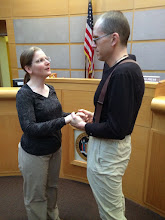
On pages 22 and 23 of The Spanish Armada: The Experience of War in 1588, Felipe Fernández-Armesto tells how the war with Spain affected English towns, giving them excuses - often very good ones - for refusing to meet levies imposed in the face of the Armada.
These hints of social tension have to be understood against a background of genuine hardships. Economic distress, caused in trading communitites by the commercial disruption of the war with Spain, was a frequently alleged ground of inability to pay for defence against the Armada. Ipswich claimed to be unable to pay for the ordnance charged against her. To the Privy Council's insistence that the cost be met by merchants who had profited from wartime reprisals against Spanish shipping, the municipal authorities 'for answer thereof affirm that they have thereby rather sustained loss than gain'. The port of Southampton wrote with a similar complaint in greater detail on 17 April: two large ships and a pinnace had been required of that town but its 'poor and insufficient number of inhabitants' would have been hard pressed to raise even the fourth part of the £500 this would have cost. War with Spain and consequent loss of trade was the main reason alleged--plausibly enough, in a place traditionally prominent in the Spanish trade and heavily concerned in its chief commodity, cloth. During the sixteen years of the Spanish embargo, the burghers said, there had been 'almost no other trade or traffic'; reprisals, as at Ipswich, had brought no relief--only a net loss of £4,000; native townspeople of substance had all gone away and there were virtually no gentlemen left. The community had already been taxed to its limit: a subsidy of £120 had been levied with difficulty; a recent charge of £250 for munitions 'remaineth dead and without profit to the town'; repairs to the seabanks and 'some little fortification' had exhausted the town's resources. To cap it all, the press had taken 110 mariners away to the fleet; so the town would have been unable to find men to sail the ships even 'if we were able to levy the charge among us.' In less strident, but equally self-righteous terms, the magistrates of East Bergholt also appealed to the economic effects of the Spanish embargo to explain their refusal to contribute, for the town's cloths
were best saleable in Spain and now through long want of vent into those parts, we find not only the stocks and wealth of the said inhabitants greatly decayed, but withal they, being very charitable and godly bent, are driven, out of their own purses, to see all the poor and needy artificers pertaining to the trade provided for sufficiently with meat, drink and clothes.
I found this a bit confusing because I'd read of how sales of raw wool to Flanders were so vital to the English economy at that time, yet here Fernández-Armesto talks of English coastal towns selling cloth. Also, since Elizabeth was supporting the Dutch Protestants who were draining Philip's resources, wouldn't those Channel merchants have had new Flemish buyers to replace the lost Spanish ones? As a matter of fact, wasn't the wool trade with Flanders one of the reasons for Elizabeth's support in the first place? Thinking it likely that "raw wool" didn't mean what I had thought it meant, and that I didn't understand the complexities of the English Channel trade, I consulted the Gunroom.
TO BE CONTINUED...

2 comments:
Wool production was not a flexible commodity. Supply could not instantly meet demand and gradually the trade in raw wool declined. Up until 1349 raw wool was the main export and the cloth, woven in Flanders and Italy was imported back into England. Then gradually between 1349 & 1542, the trade changed and the English wool merchants came to realise they could improve their profits by producing wool cloth themselves. Thus the production of wool cloth increased and a medieval industrial revolution resulted. Mills were built to facilitate the hand washing, carding, combing and drying the raw wool; with waterways or leats were constructed to divert the water for washing the wool. After this it was hand spun and then woven. Spinners and weavers soon abounded. A cottage industry that made england rich.
Thanks annie! I'm embarrassed to have let so much time lapse without a followup entry, but my cartographic obsession caused some serious detours. Someday soon I hope to read through my list of web pages and handful of JSTOR articles on the English wool trade, and make that entry.
Post a Comment